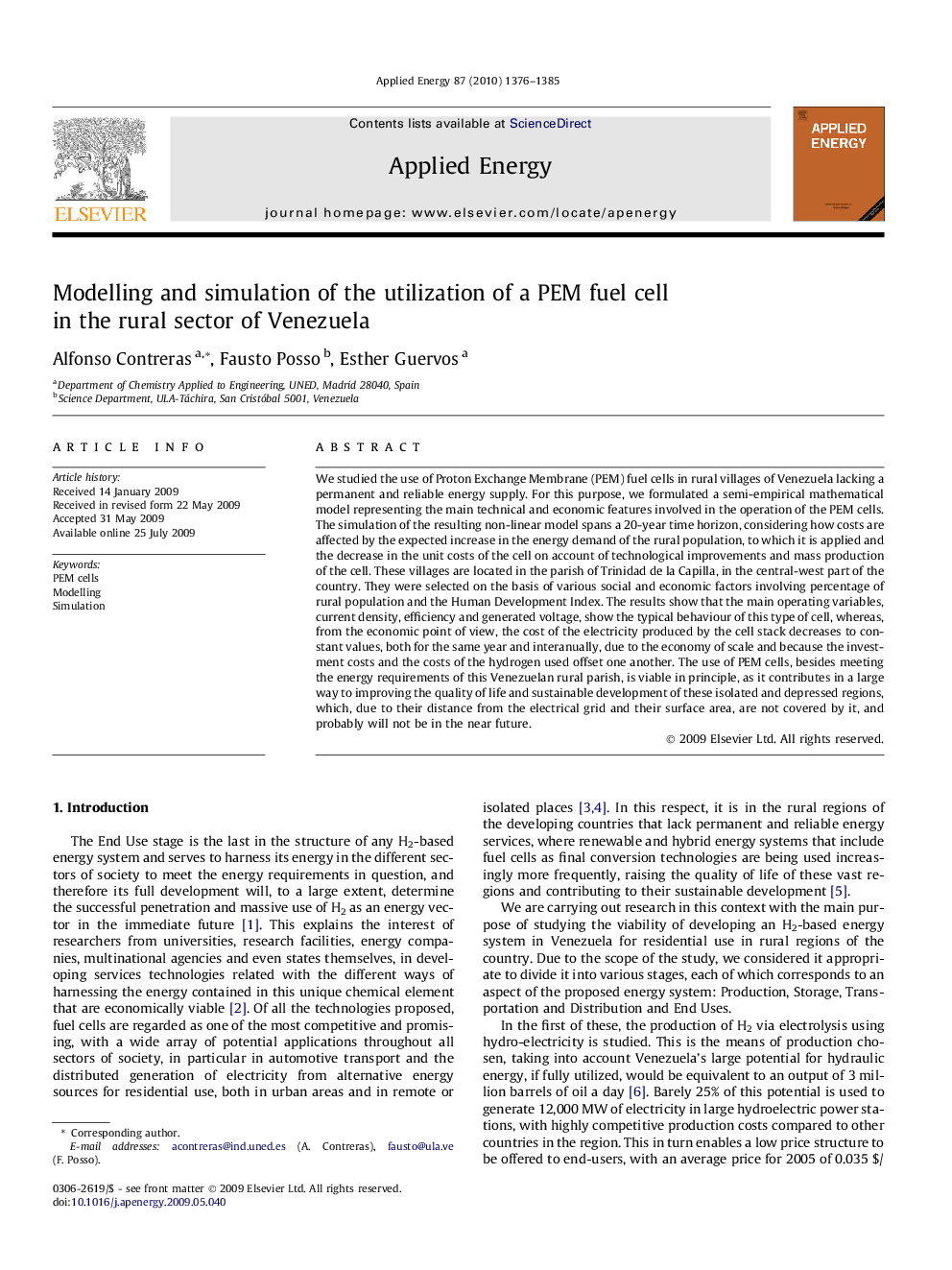| Article ID | Journal | Published Year | Pages | File Type |
|---|---|---|---|---|
| 244647 | Applied Energy | 2010 | 10 Pages |
We studied the use of Proton Exchange Membrane (PEM) fuel cells in rural villages of Venezuela lacking a permanent and reliable energy supply. For this purpose, we formulated a semi-empirical mathematical model representing the main technical and economic features involved in the operation of the PEM cells. The simulation of the resulting non-linear model spans a 20-year time horizon, considering how costs are affected by the expected increase in the energy demand of the rural population, to which it is applied and the decrease in the unit costs of the cell on account of technological improvements and mass production of the cell. These villages are located in the parish of Trinidad de la Capilla, in the central-west part of the country. They were selected on the basis of various social and economic factors involving percentage of rural population and the Human Development Index. The results show that the main operating variables, current density, efficiency and generated voltage, show the typical behaviour of this type of cell, whereas, from the economic point of view, the cost of the electricity produced by the cell stack decreases to constant values, both for the same year and interanually, due to the economy of scale and because the investment costs and the costs of the hydrogen used offset one another. The use of PEM cells, besides meeting the energy requirements of this Venezuelan rural parish, is viable in principle, as it contributes in a large way to improving the quality of life and sustainable development of these isolated and depressed regions, which, due to their distance from the electrical grid and their surface area, are not covered by it, and probably will not be in the near future.
